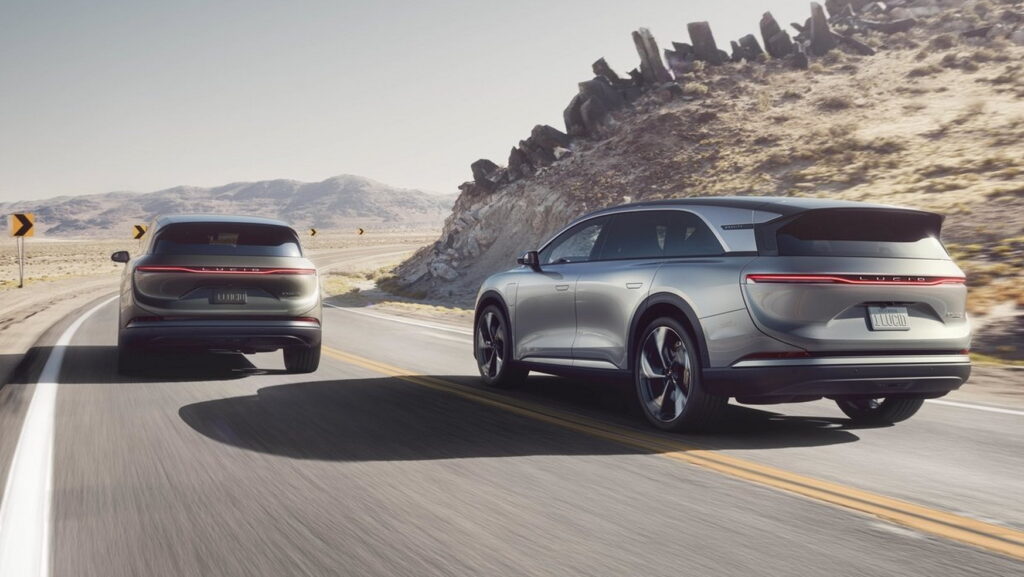Other brands like Ford, GM, and Mercedes-Benz have hands-free lane change features
July 16, 2025 at 09:25

- Lucid’s hands-free driving assist will work on compatible divided highways in the US.
- The update is arriving on July 30 for the Air and will launch on the Gravity later this year.
- Vehicles need to be equipped with the DreamDrive Pro technology suite for $2,500.
The Lucid Air is already one of the best EVs on the market, combining luxury with performance in a way that legacy automakers have struggled to compete with. Now, Lucid’s suite of advanced driver assistance systems is getting a major update, bringing with it hands-free driving assist and lane change assist systems. For owners of the flagship Air Sapphire, that means they’ll soon be able to hand over the reins to computers to control one of the world’s quickest cars. Now that’s a scary thought.
These updates will be introduced through an over-the-air software update scheduled to roll out on July 30 for all Lucid Air models equipped with the DreamDrive Pro suite. This system makes use of a LiDAR, radar, visible-light cameras, surround-view cameras, and ultrasonic sensors to make driving that little bit easier.
Read: This $110K EV Refuses To Let Its Owner In And That’s Not Even The Worst Part
Lucid says drivers will be able to use the hands-free driving feature and hands-free lane changes on compatible divided highways. However, it hasn’t specified what exactly makes a divided highway “compatible” for use with the system. The new features will be rolled out to the Lucid Gravity later in the year.
Several other car manufacturers have introduced hands-free driving modes for their ADAS systems, including Ford, GM, and Mercedes-Benz. Hands-free lane change features are also becoming more commonplace, and in the Lucid Air, drivers simply need to flick on the turn signal before the car itself will determine if it’s safe to change lanes. If it is, the car will smoothly glide into the next lane.

“The addition of these features to Lucid’s DreamDrive Pro offers a glimpse into the future that Lucid is building with the impressive capabilities of our software-defined vehicles,” Lucid’s ADAS and AD vice president, Kai Stepper, said. “With our in-house software stack, a comprehensive suite of 32 sensors, and regular OTA updates, we have a roadmap to continue to deliver significantly more functionality to our owners in the future.”
Lucid Air owners who didn’t opt for the DreamDrive Pro system may now regret their decision. Unlike Tesla’s Full Self-Driving system, which has recently cost upwards of $8,000, Lucid’s system is relatively good value at just $2,500.


